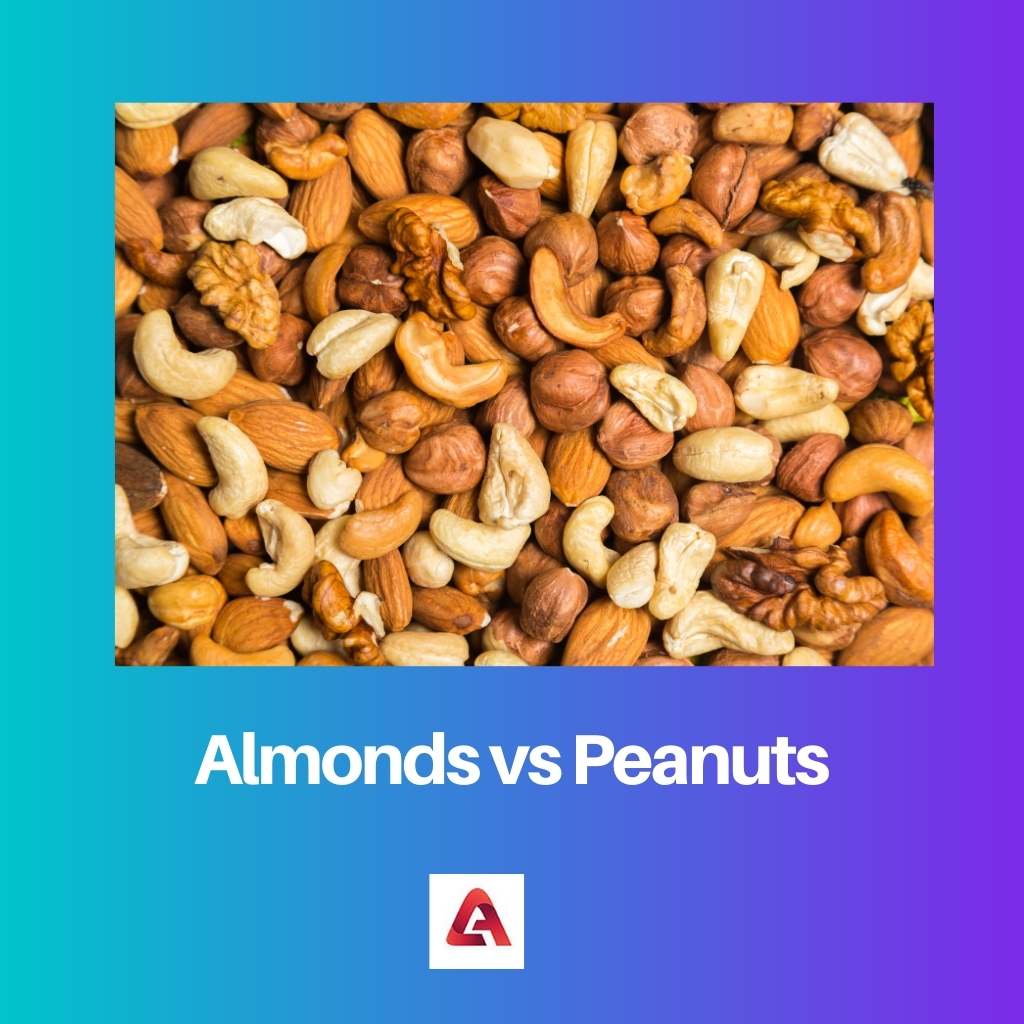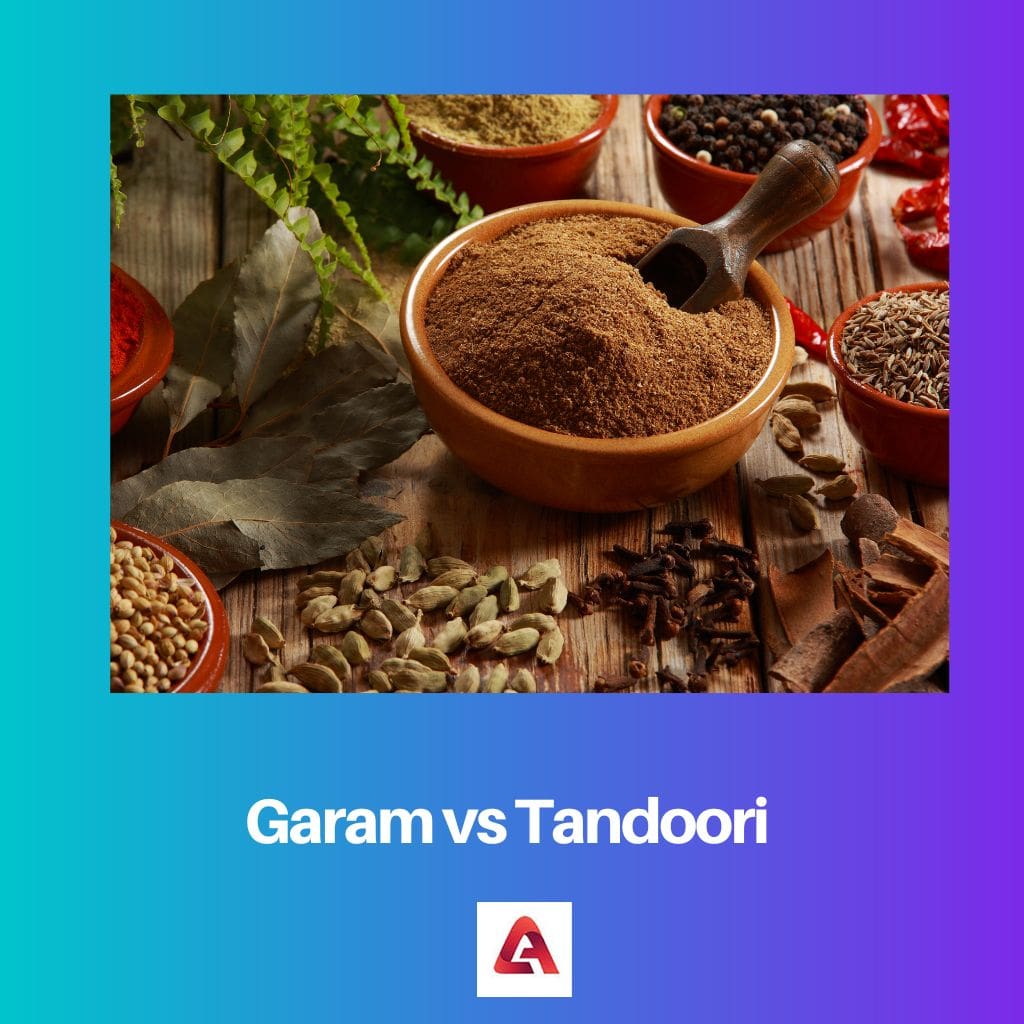There are many different types of nuts, but the two most popular types of nuts in the world are almonds and peanuts. Both of these nuts are high in protein and have several health benefits, but they also have their differences.
To understand their nutritional value, one needs to know their differences.
Key Takeaways
- Almonds grow on trees and belong to the Rosaceae family, whereas peanuts grow underground and are part of the Fabaceae family.
- Almonds have higher vitamin E, magnesium, and healthy fats than peanuts, which are richer in protein and B vitamins.
- Almonds are considered tree nuts and can cause severe allergic reactions, while peanuts are legumes and trigger different allergies.
Almonds vs Peanuts
The difference between almonds and peanuts is that they belong to two different families of plants. Almonds are part of the Rosaceae family and are related to apples and plums. Peanuts are part of the Fabaceae family, which includes beans and peas. They are both seeds in the botanical sense, but the edible portion is the fruit.

Almonds are seeds from almond trees. They are in the same family as peaches, apricots, plums and cherries.
Almonds are harvested in the fall, and with a crunchy texture, sweet flavour and high level of protein, it’s no wonder why almonds are a popular snack.
When we think about a peanut, the first thing that comes to mind is the peanut, that small thing that is found in peanut butter. But have you ever thought about what exactly a peanut is?
Well, it’s a legume that is a part of the bean family. The peanut is harvested from the ground and is an edible crop that is used predominantly in the food industry.
Comparison Table
| Parameters of Comparison | Almonds | Peanuts |
|---|---|---|
| Family | Almonds are part of the Rosaceae family of plants. | Peanuts are a part of the Fabaceae family of plants. |
| Scientific Name | The scientific name of the almond tree is Prunus delicious. | The scientific name of peanut plants is Arachis hypogaea |
| Amount of Fat | Almonds contain more fat than peanuts. | Peanuts contain less fat than almonds. |
| Amount of protein | Almonds contain less protein than peanuts. | Peanuts contain more protein than almonds. |
| Other nutrition | Almonds are rich in riboflavin, iron and vitamin E. | Peanuts are a rich source of niacin, vitamin B6, folic acid, pantothenic acid and so on. |
What are Almonds?
Almonds are the fruits that grow on almond trees. They’re inedible when raw, but they become soft and sweet by putting them in hot water.
Afterwards, you can put them in the food processor and use them for baking or making almond milk. They’re high-fat food, but they help you to stay strong and healthy.
At the same time, they’re packed with fibre, calcium, and Vitamin E. They’re also delicious!
Almonds, like most nuts, are a good source of protein, other nutrients, and healthy fats. I like to eat them plain, but I’ve also heard of people eating them with rice or in other recipes.
Several kinds of almonds come from different trees. They’re a type of stone fruit and are similar in appearance to cherries.
Some of the most common uses for almonds include almond milk, marzipan, almond oil, and almond extract. Almonds can be used for many different things and are sold raw, roasted, and salted.
Although almonds are a fruit, they are sold as a snack or a pantry item. Almonds are small, sweet, edible seeds that grow on trees.
They can be eaten raw and can also be made into paste, oil, soap and many more products.
Almonds are a great source of vitamins E and B, calcium, protein and fibre. They are also a good source of antioxidants, which are substances that prevent ageing and other health problems.
Almonds are a delicious, protein-rich treat. They can satisfy you without feeling overly full.
They have high amounts of vitamin E, B5, and folate. They also have a lot of magnesium, which is known to soothe muscles and aid in the production of energy.
However, they do contain a hefty amount of fat, as do most nuts.

What is Peanuts?
Peanuts are nuts found to grow from a leguminous plant related to the bean family. But most people don’t know that there are hundreds of varieties of peanuts!
There are runner peanuts, Virginia peanuts, Spanish peanuts and Valencia peanuts. When you open the shell, a thin and hard white is outside.
They’re loaded with nutrients, vitamins, and minerals and are also a great source of protein.
Peanuts are rich in nutrients and are good for health. With 25 grams of protein and 7 grams of unsaturated fat per 100 grams, they provide you with a good amount of protein and fat.
However, they also contain a lot of carbohydrates – around 55 grams per 100 grams.
Some of these carbohydrates are simple sugars, which means they are digested quickly, meaning you will soon feel hungry again.
The other half of them are complex sugars, which take longer to digest, meaning your body will not be hungry again at the same speed. They are also rich in vitamin E, B-complex vitamins and iron.
Peanuts are easy to digest and are the most commonly consumed nut globally. They are used in many recipes and even used in peanut butter!
Peanuts are versatile because they can be eaten raw, roasted, or salted. They are available in many health stores, grocery stores, and even farmer’s markets.

Main Differences Between Almonds and Peanuts
- Almonds and peanuts are both edible seeds, but almonds are not related to beans, while peanuts and beans are from the same family.
- Almonds grow on trees, while peanuts grow on leguminous plants. The plants are fundamentally different, and they taste different as well.
- Almonds also have a mild taste, whereas peanuts have a strong taste.
- Almonds also have smooth shells, whereas peanuts have hard shells. That has to be peeled to find the edible part of the peanut.
- Almonds are yellowish-brown with white on the inside, while peanuts have a thin brown outer shell with off-white nut inside.









